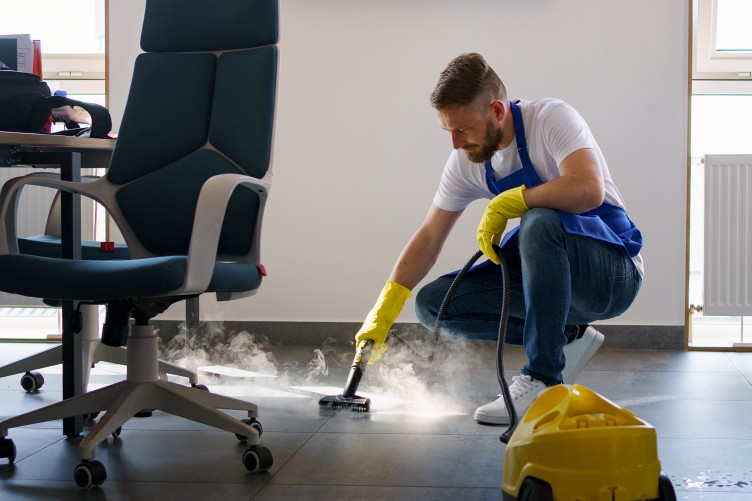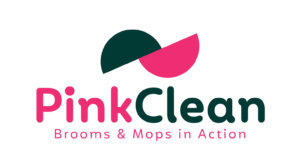What is the difference between regular cleaning and deep cleaning?

Have you ever wondered about the distinction between regular cleaning and deep cleaning? Keeping your space clean is essential for your health and well-being, but the level of cleaning you need can vary depending on your circumstances. In this article, we will explore the differences between regular and deep cleaning and help you determine which one is right for you.
Regular Cleaning: What Is It?
Regular cleaning is the day-to-day maintenance of your living or working space. It involves routine tasks such as sweeping, dusting, vacuuming, and wiping down surfaces. Regular cleaning aims to keep your space looking tidy and free from the accumulation of dust and dirt that naturally occurs. It is typically less time-consuming and can be done by homeowners themselves or by professional cleaners on a regular schedule.
Deep Cleaning: An In-Depth Look
Deep cleaning, on the other hand, is a more thorough and intensive cleaning process. It targets areas and tasks that are often neglected during regular cleaning. Deep cleaning involves tasks such as cleaning grout, scrubbing baseboards, washing walls, and cleaning inside appliances. The goal of deep cleaning is to eliminate deeply embedded dirt, grime, and bacteria. It is a comprehensive cleaning process that can rejuvenate your space.
Key Differences Between Regular and Deep Cleaning
- Scope: Regular cleaning is surface-level maintenance, while deep cleaning is an in-depth, comprehensive cleaning process.
- Frequency: Regular cleaning is done on a daily, weekly, or bi-weekly basis, while deep cleaning is typically performed less frequently, perhaps once every few months.
- Intensity: Deep cleaning requires more time, effort, and often specialized cleaning products.
- Purpose: Regular cleaning maintains cleanliness, while deep cleaning restores and refreshes the space.
When Should You Opt for Regular Cleaning?
Regular cleaning is suitable for maintaining spaces that are already in good condition. If you keep up with daily chores and cleaning routines, regular cleaning is often sufficient to keep your environment clean and pleasant.
When Should You Choose Deep Cleaning?
Deep cleaning is ideal for spaces that have not been thoroughly cleaned in a while or have experienced unusual circumstances, such as after a renovation, moving into a new home, or hosting a big event. It’s also beneficial for individuals who want a comprehensive cleaning to improve the overall hygiene of their living or working environment.
The Benefits of Regular Cleaning
Regular cleaning offers numerous benefits for both your physical and mental well-being, as well as the overall hygiene and appearance of your living space. Here are some of the key advantages of maintaining a clean environment:
Improved Health: Regular cleaning helps remove dust, allergens, and pathogens from your home, reducing the risk of allergies, respiratory problems, and illnesses. A clean living space can lead to better physical health and fewer sick days.
Mental Clarity: A clean and organized space can have a positive impact on your mental well-being. It reduces visual clutter and creates a sense of order, leading to reduced stress and anxiety.
Increased Productivity: A clean and tidy workspace can boost your productivity and creativity. When your surroundings are well-organized, you can focus better on tasks and feel more motivated to accomplish them.
Enhanced Safety: Regular cleaning can identify and eliminate potential safety hazards in your home. For instance, clearing clutter and maintaining clean walkways can reduce the risk of tripping and falling.
The Advantages of Deep Cleaning
Improved Indoor Air Quality: Deep cleaning helps remove dust, allergens, and pollutants that can accumulate in hard-to-reach places. This can significantly improve indoor air quality, making the space healthier for occupants, particularly those with allergies or respiratory conditions.
Healthier Environment: Deep cleaning reduces the presence of bacteria, viruses, and germs in your living or working space. This can lower the risk of illness and create a healthier environment for everyone.
Extended Longevity of Surfaces and Appliances: By removing dirt, grime, and buildup, deep cleaning can help preserve the condition and extend the life of various surfaces and appliances. Regular maintenance can be more cost-effective in the long run compared to replacing or repairing items prematurely.
Enhanced Aesthetic Appeal: Deep cleaning restores the original appearance of surfaces, carpets, upholstery, and fixtures. This can make your space look more appealing and inviting, whether it’s a home, office, or commercial establishment.
Odor Elimination: Deep cleaning can eliminate odors caused by accumulated dirt, spills, or pet dander. Freshening up the space can create a more pleasant living or working environment.
Increased Productivity: In commercial settings, a clean and organized workspace can lead to increased productivity and employee morale. Employees tend to work more efficiently in a well-maintained environment.
Compliance with Health and Safety Standards: In some industries, compliance with health and safety standards is essential. Deep cleaning helps maintain a clean and safe environment, reducing the risk of accidents and ensuring regulatory compliance.
Prevention of Pest Infestations: Regular deep cleaning can prevent pests from finding a home in your space. Crumbs, food residue, and clutter can attract pests, but a thorough cleaning can deter them.
The Process of Regular Cleaning
Regular cleaning typically involves tasks such as sweeping, mopping, dusting, vacuuming, and surface wiping. It’s a manageable routine that can be done by homeowners themselves or by professional cleaning services on a regular basis.
The Process of Deep Cleaning

Deep cleaning involves tasks that require more time and effort, such as cleaning carpets, upholstery, windows, and appliances. It may also include disinfection to eliminate harmful bacteria and allergens.
- Preparation:
- Gather the necessary cleaning supplies and equipment. This may include cleaning solutions, brushes, mops, vacuum cleaners, microfiber cloths, gloves, and protective gear.
- Remove clutter and items from the area to be cleaned. This will make it easier to access all surfaces and corners.
Dust and Cobweb Removal:
- Start by removing dust and cobwebs from high and hard-to-reach areas like ceilings, light fixtures, and corners. Use a duster or a vacuum cleaner with a long attachment.
Cleaning Surfaces:
- Clean all surfaces, including countertops, shelves, and furniture. Wipe down surfaces with appropriate cleaning solutions and disinfectants.
- Pay special attention to frequently touched surfaces such as doorknobs, switches, and handles.
Floor Cleaning:
- Vacuum or sweep the floors to remove loose dirt and debris.
- Depending on the type of flooring (e.g., hardwood, tile, carpet), deep clean by mopping, scrubbing, or steam cleaning.
Appliances and Fixtures:
- Clean and disinfect appliances like ovens, refrigerators, microwaves, and dishwashers both inside and out.
- Polish and clean fixtures like faucets and sinks.
Windows and Glass:
- Clean windows, mirrors, and glass surfaces with an appropriate glass cleaner.
- Pay attention to streaks and ensure a streak-free finish.
Bathroom Cleaning:
- Scrub and disinfect the bathroom, including the toilet, shower, bathtub, sink, and tiles.
- Pay attention to mold and mildew in damp areas.
Deep Cleaning Carpets and Upholstery (if applicable):
- Steam clean or shampoo carpets and upholstery to remove embedded dirt and stains.
- Allow time for drying.
Air Vent and Duct Cleaning (if applicable):
- If your space has air vents or ducts, consider cleaning or replacing filters to improve air quality.
Baseboards and Trim:
- Wipe down baseboards, trim, and moldings to remove accumulated dust and grime.
Closet and Storage Areas:
- Organize and declutter storage spaces, such as closets and cabinets.
Final Touches:
- Replace items you removed earlier, ensuring they are clean and organized.
- Vacuum or sweep the entire space once more to catch any debris that may have fallen during the cleaning process.
Dispose of Cleaning Materials:
- Properly dispose of any used cleaning materials and empty the vacuum cleaner or trash bags.
Check out Pinkclean’s Deep cleaning services >
Cost Comparison: Regular vs. Deep Cleaning
The cost of cleaning services varies depending on the scope and intensity of the work. Regular cleaning is generally less expensive than deep cleaning, given its less extensive nature. It’s important to consider your budget and cleaning needs when choosing between the two.
DIY vs. Professional Cleaning Services

While regular cleaning is often manageable as a DIY task, deep cleaning may be more efficiently and effectively done by professional cleaning services like Pinkclean. They have the expertise and equipment to tackle the most challenging cleaning tasks.
Conclusion
In conclusion, the difference between regular cleaning and deep cleaning lies in the scope, frequency, intensity, and purpose of the cleaning process. Regular cleaning is suitable for maintaining cleanliness, while deep cleaning provides a more thorough and in-depth approach. Pinkclean offers the best of deep cleaning services.
